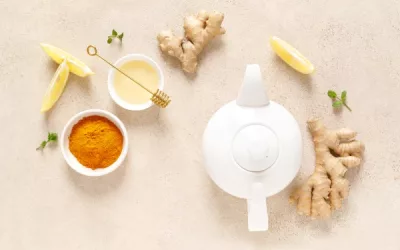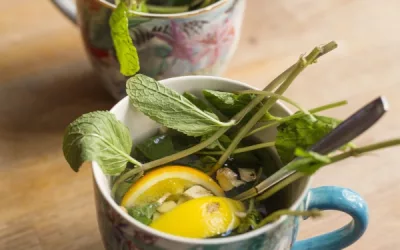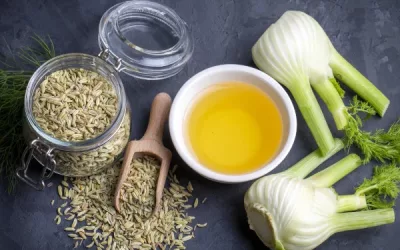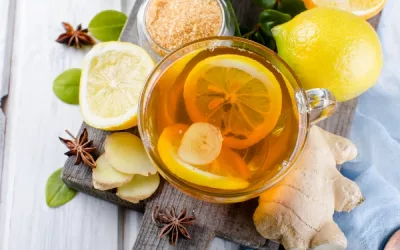Have you ever sipped a warm cup of tea and felt an instant wave of calm wash over you? Lemongrass tea, a fragrant herbal infusion, has long been cherished not just for its refreshing taste but also for its myriad health benefits. As more people seek natural remedies in today’s fast-paced world, understanding what lemongrass tea can offer becomes increasingly important. This guide delves into its health advantages, preparation methods, and how it stacks up against other herbal drinks, ensuring you make the most of this delightful brew.
Table of Content
- What is lemongrass tea?
- How can I prepare lemongrass tea at home?
- Is it safe to drink lemongrass tea daily?
- How does lemongrass tea compare to other herbal teas?
- What are the nutritional properties of lemongrass tea?
- Can I add other flavours to lemongrass tea?
- What are the environmental impacts of harvesting lemongrass?
- Conclusion
What is lemongrass tea?
Lemongrass tea is a herbal tea made from the leaves and stalks of the lemongrass plant, scientifically known as Cymbopogon citratus. This plant is native to tropical regions of Asia, such as India and Sri Lanka, and has a distinct lemony aroma and flavor, making it a popular ingredient in various cuisines and herbal remedies. Lemongrass tea is known for its refreshing taste, citrusy scent, and potential health benefits.
Key Characteristics of Lemongrass Tea
- Flavor and Aroma: Lemongrass tea has a fresh, citrus-like flavor with a hint of sweetness and a slightly earthy undertone. Its aroma is similar to lemon but more subtle and not as sharp.
- Appearance: When brewed, lemongrass tea typically has a light golden-yellow color.
- Caffeine-Free: Since lemongrass is an herb, not a tea plant, lemongrass tea is naturally caffeine-free, making it a good option for those looking to avoid caffeine.
Lemongrass tea is a refreshing and aromatic herbal beverage with a variety of potential health benefits. Its mild, lemony flavor and natural calming properties make it a popular choice for those seeking a caffeine-free alternative to traditional tea.
How to find quality lemon grass?
Alright, so you want to find quality lemongrass, huh? You’re in the right place! Finding top-notch lemongrass is not rocket science, but it does require a keen eye and maybe a bit of a nose.
Let’s cut through the fluff and get straight to the point – here’s how you can pick out the best lemongrass that will make your tea, soup, or stir-fry sing with flavor.
- Color: Go for vibrant green at the top and pale yellow/white at the base. Brown or dried out? Hard pass.
- Firmness: Squeeze it. Should feel firm, not floppy. If it feels like a soggy noodle, move on.
- Lemony Scent: Sniff it. Should smell like fresh lemons with a hint of ginger. If it smells like your gym socks, put it back.
- Thick and Long: Look for stalks that are thick and around 12-18 inches. Avoid the skinny ones; they’re usually dry and sad.
- Trimmed but Solid: A little trimming is fine, but avoid overly trimmed stalks. The base should still look solid.
- Best Bet: Asian grocery stores or farmer’s markets. Supermarkets are hit or miss, but worth a shot if you’re desperate.
- Store it right: Wrap in a damp paper towel, put in a plastic bag, and keep it in the fridge for up to two weeks. Or freeze it if you’re the long-term type.
- Use the white part: That’s where the flavor’s at. Save the green tops for tea or soup stock.
Now you’re ready to grab the best lemongrass like a pro!
In the early 20th century, a discovery was made by French scientists in Vietnam. They found that lemongrass could repel mosquitoes, which were rampant and spreading diseases like malaria.
This discovery highlighted the plant’s potential benefits beyond just culinary uses. It led to lemongrass being used in various insect repellent formulations, showcasing its versatility and usefulness in improving health and well-being.
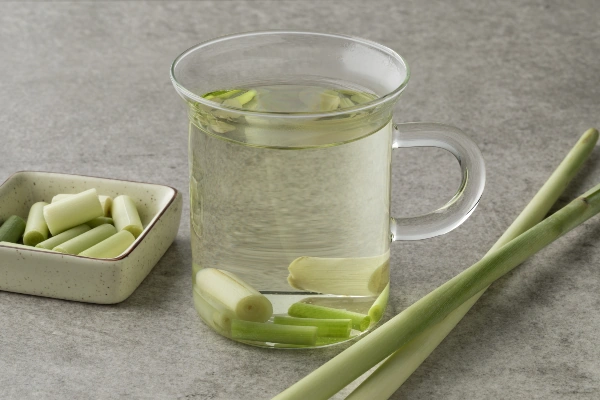
How can I prepare lemongrass tea at home?
Preparing lemongrass tea at home is a delightful and straightforward process. This aromatic herbal tea, known for its bright, citrusy flavour and numerous health benefits, can be made with a few simple ingredients. Below is a table that will guide you through the process, from gathering ingredients to serving the perfect cup of lemongrass tea.
The table below outlines the essential ingredients, step-by-step preparation instructions, infusion time, and a few serving suggestions. It’s designed to be easy to understand and follow, ensuring you can make the best lemongrass tea in the comfort of your own home.
| Ingredient/Step | Details | Notes/Variations |
|---|---|---|
| Fresh lemongrass stalks | 2-3 stalks, chopped into small pieces | You can use dried lemongrass if fresh is not available. |
| Water | 4 cups | Adjust the amount based on desired tea strength. |
| Optional: Ginger | 1-inch piece, sliced | Adds a spicy kick and enhances health benefits. |
| Optional: Honey | To taste | Sweetens the tea; you can also use sugar or agave syrup. |
| Bring water to boil | In a medium-sized pot, bring water to a rolling boil | Use filtered water for a cleaner taste. |
| Add lemongrass | Add chopped lemongrass (and ginger if using) to boiling water | Stir gently to ensure full immersion of the ingredients. |
| Simmer and infuse | Reduce heat and let simmer for 5-10 minutes | Longer infusion results in stronger flavour and more nutrition. |
| Strain and serve | Pour through a strainer into cups | Serve hot or allow to cool for a refreshing iced tea. |
| Serving suggestions | Add a slice of lemon or lime, a few mint leaves, or a cinnamon stick | Experiment with various additions to find your favourite blend. |
Fresh lemongrass gives the tea a vibrant and refreshing taste. You can customise your tea by adding ingredients like ginger or honey, which can enrich the flavour and provide additional health benefits. The infusion time can be adjusted to suit your preference, making the tea stronger or lighter as needed.
What are the health benefits of lemongrass tea?
Lemongrass tea offers a multitude of health benefits, making it a popular choice among health-conscious individuals and herbal tea enthusiasts. The tea is rich in antioxidants and has various medicinal properties. Here are some of the key health benefits:
- Aids digestion: Lemongrass tea can help alleviate digestive issues such as bloating and indigestion.
- Reduces inflammation: The anti-inflammatory properties can help reduce pain and inflammation.
- Supports detoxification: Acts as a diuretic, helping to flush out toxins from the body.
- Boosts immunity: Contains essential vitamins and antioxidants that can strengthen the immune system.
- Relieves anxiety: The soothing aroma and flavour can help reduce stress and promote relaxation.
Lemongrass contains compounds like citral and geraniol, which contribute to its health benefits. Drinking this tea regularly can help maintain overall well-being and support various bodily functions.
How should I store lemongrass tea?
Storing lemongrass tea properly ensures that it retains its flavour and health properties. Here are some tips for storing both fresh and dried lemongrass:
- Fresh lemongrass:
- Store in the refrigerator
- Keep in a sealed plastic bag or container
- Use within one to two weeks for best flavour
- Can be chopped and frozen for longer storage
- Dried lemongrass:
- Store in an airtight container
- Keep in a cool, dark place
- Use within six months for optimal freshness
- Ensure no exposure to moisture to avoid mould
By following these storage tips, you can enjoy fresh, flavourful lemongrass tea whenever you desire. Proper storage also helps in maintaining the tea’s health benefits.
During the 17th century, lemongrass gained popularity in Europe as a medicinal herb. Dutch traders brought dried lemongrass from Southeast Asia, where it was widely used in traditional medicine. European apothecaries started incorporating lemongrass into their remedies for treating fever, digestive problems, and respiratory issues. This historical trade helped to introduce lemongrass to a broader audience, eventually leading to its inclusion in various culinary and medicinal practices worldwide.
Is it safe to drink lemongrass tea daily?
Lemongrass tea, the zesty, aromatic drink that promises a hug in a cup, is generally safe for daily consumption. However, like any good thing, moderation is key. Overdoing it, and you might end up with a tad more than you bargained for.
For starters, recommended dosage is crucial. Most experts agree that 1-2 cups per day is perfectly fine. Chugging gallons of it like you’ve found the elixir of life might be overkill. Lemongrass tea is touted for its myriad health benefits, but there are a few potential pitfalls. Interactions with medications and certain health conditions can throw a spanner in the works, so let’s dive deeper into this fragrant brew.
What are the key health benefits of lemongrass tea?
Lemongrass tea is known for its potential to relieve anxiety, lower cholesterol, prevent infections, boost oral health, and aid digestion. These benefits are supported by scientific research, and many people have found it to be a natural remedy for various health issues. Adding lemongrass tea to your daily routine might be a simple and effective way to enhance your health.
- Digestive Health: Lemongrass tea is known for its ability to soothe the digestive system. It may help relieve indigestion, bloating, and gas. The tea acts as a natural diuretic, aiding in detoxification and helping to cleanse the digestive tract.
- Antioxidant Properties: Lemongrass contains antioxidants that help combat oxidative stress and free radicals in the body. Antioxidants can contribute to overall health and may play a role in preventing certain chronic diseases.
- Anti-Inflammatory Effects: The compounds in lemongrass, such as citral, have been shown to possess anti-inflammatory properties. These properties may help reduce inflammation and pain associated with conditions like arthritis.
- Antimicrobial and Antibacterial Properties: Lemongrass has natural antibacterial and antimicrobial qualities that can help fight infections. Drinking lemongrass tea may support the immune system and help prevent common colds, flu, and other infections.
- Stress Relief and Sleep Aid: The calming effects of lemongrass tea make it a popular choice for stress relief and relaxation. It is often used as a natural remedy for anxiety and insomnia due to its soothing properties.
- Blood Pressure Regulation: Lemongrass tea may help maintain healthy blood pressure levels. Its diuretic effect can assist in reducing blood pressure by promoting the elimination of excess sodium through urine.
- Weight Loss Support: Lemongrass tea is sometimes used as part of a weight loss regimen because it can act as a mild diuretic and help boost metabolism. However, its effectiveness as a weight loss aid should be considered as part of a broader healthy lifestyle.
What are the potential side effects of lemongrass tea?
Let’s not sugarcoat it—lemongrass tea, despite its many laurels, does come with a caution label. Here’s what you need to keep in mind:
- Stomach Upsets: Overconsumption can lead to gastrointestinal issues like cramps, abdominal pain, or diarrhoea.
- Allergic Reactions: Those sensitive to lemongrass could experience skin rashes, itching, or swelling.
- Lowered Blood Sugar: It can reduce blood sugar levels, which may cause dizziness or fainting, especially in people with hypoglycaemia.
- Pregnancy Concerns: Pregnant women should avoid it as it may induce menstrual flow and potentially lead to complications.
- Diuretic Effects: It has diuretic properties, meaning frequent trips to the loo are a possibility.
All in all, knowing these effects could save you from unintended trips to the doctor’s office or the loo. Proceed wisely!
Can lemongrass tea interact with other medications?
Your morning brew might be an herbaceous delight, but mixing it with your meds isn’t always a match made in heaven.
- Anti-diabetic Medications: Since lemongrass can lower blood sugar, combining it with diabetes medications can lead to dangerously low glucose levels.
- Diuretics: The diuretic effect of lemongrass might compound with diuretic medications, causing excess fluid loss and possibly dehydration.
- Blood Pressure Medications: Lemongrass can also lower blood pressure, so pairing it with blood pressure-lowering meds might cause hypotension.
Knowing these interactions keeps you a step ahead, ensuring you can indulge in your cuppa without the pharmaceutical conflict.
Are there specific health conditions that may affect the safety of drinking lemongrass tea?
Sometimes, your health status might just not play nice with lemongrass tea. Certain conditions necessitate caution or outright avoidance:
- Pregnancy: As mentioned, lemongrass tea isn’t a friend to expectant mothers.
- Gastrointestinal Conditions: If you have sensitive guts, IBS, or similar conditions, the tea’s tummy-turning potential might exacerbate symptoms.
- Blood Sugar Issues: Those with unstable blood sugar levels, whether hypoglycaemic or diabetic, should tread carefully.
- Kidney Problems: It’s a diuretic, which means it pulls more water out of your body. Not ideal if you’re managing kidney issues.
In each case, it’s always best to consult with your healthcare provider. Better safe than sorry, right?
While on the topic of natural remedies, it’s worth mentioning Hippocrates, the ‘Father of Medicine,’ who pioneered the principles of diet and lifestyle over two thousand years ago. He championed the use of herbs in treating ailments, always advocating for “doing no harm”. Applying this wisdom today, a measured approach to enjoying lemongrass tea ensures balance and maintains the ethos of holistic health care.
So, next time you brew that tangy delight, do it with the assurance of knowledge, health benefits, and a nod to ancient wisdom. Cheers!
How does lemongrass tea compare to other herbal teas?
Ah, the world of herbal teas – it’s like stepping into a magical garden where every plant has a story to tell. Among this verdant collection, lemongrass tea might be the zesty underdog you didn’t know you needed. But how does it hold up against the herbal titans like chamomile, peppermint, and green tea? Buckle up, tea lover. We’re about to spill the tea on this one.
When it comes to herbal brews, lemongrass tea is a league of its own. Chamomile brings its daisy-like calmness and slightly sweet, apple-like flavour to the table. Peppermint rolls in with that cool, refreshing blast that clears your sinuses and wakes up your senses. Green tea, the ancient elixir, offers a subtly bitter yet soothing profile backed by a mountain of health boons. Compared to these, lemongrass tea, with its citrusy zing and refreshing aftertaste, is like a burst of sunshine in a cup.
In terms of health benefits, lemongrass tea packs a punch. It’s loaded with antioxidants, helps with digestion, and can even ease anxiety – an all-rounder for your well-being. Chamomile, the bedtime champion, excels at improving sleep and reducing stress. Peppermint is notorious for aiding digestion and freshening breath, while green tea, the powerhouse, is famous for its metabolism-boosting, cancer-fighting properties.
Each of these teas has its own unique preparation method – chamomile and peppermint just need a nice, warm bath, while green tea requires a more precise temperature to unlock its full potential. Lemongrass tea? Easy-peasy. Steep in boiling water for 5-10 minutes and let the magic unfold.
What makes lemongrass tea unique compared to other herbal teas?
Alright, so what gives lemongrass tea that extra oomph in the herbal tea aisle? Let’s break it down.
- Flavor profile: Lemongrass tea offers a citrusy, slightly sweet taste that’s both refreshing and soothing. Unlike the floral chamomile, the minty peppermint, or the earthy green tea, its flavour is a delightful mix of lemon and mild ginger.
- Antioxidant powerhouse: Rich in flavonoids and phenolic compounds, lemongrass tea helps combat oxidative stress and may even prevent chronic diseases.
- Digestive aid: Lemongrass tea is fantastic for your gut. It acts as a natural diuretic and helps relieve bloating and stomach cramps.
- Versatility: It can be sipped hot or over ice, making it a flexible choice for all seasons. Plus, it pairs wonderfully with lemon or a dash of honey for added flavour.
- Aromatic delight: The strong, lemony aroma of lemongrass tea makes for a calming sensory experience that can double as aromatherapy.
These factors set lemongrass tea apart, making it a standout in the herbal tea realm. Its unique combination of taste, health benefits, and versatility gives it a distinct edge over the competition.
Which herbal tea has the most health benefits?
Now, if you’re wondering which herbal tea should be crowned the healthiest of all, here’s the roundup:
- Lemongrass tea: Known for its antioxidants, digestive benefits, and its potential to lower cholesterol.
- Green tea: The heavyweight champ in the health department. Boosts metabolism, reduces the risk of cancer, promotes heart health, and enhances brain function.
- Chamomile tea: Great for relaxation, promoting sleep, and reducing menstrual pain. It also has anti-inflammatory properties.
- Peppermint tea: Excellent for digestive health, relieving tension headaches, and improving concentration.
In terms of sheer power, green tea might take the top spot due to its comprehensive range of health benefits supported by extensive research. That said, lemongrass tea isn’t far behind and shines brightly with its own set of perks.
Can lemongrass tea be used in combination with other herbal teas?
Mixing herbal teas? Absolutely, why not have a little herbal tea party in your cup?
- Lemongrass and ginger: A match made in heaven, perfect for digestion and a natural immunity boost.
- Lemongrass and peppermint: The citrusy zing of lemongrass complements the coolness of peppermint, making it a refreshing treat.
- Lemongrass and chamomile: Combine these two for a relaxing, soothing tea that’s perfect before bedtime.
- Lemongrass and green tea: This duo packs a potent antioxidant punch and a unique flavour profile that’s both refreshing and robust.
Combining lemongrass tea with other herbal teas not only diversifies the flavour but also enhances the overall health benefits. It’s a win-win situation.
Long before herbal teas became the go-to comfort drink, there was an era where lemongrass was sought after like gold. Legend has it that in ancient Egypt, lemongrass was a prized ingredient, not just for its medicinal properties but also for its aromatic charm. Egyptian pharaohs would have lemongrass oil distilled and used for medicinal purposes, beauty treatments, and even during spiritual rituals to promote healing and relaxation. So, next time you sip your lemongrass tea, remember, you’re partaking in a ritual that’s as ancient as the pyramids, enjoyed by kings and commoners alike. Cheers to that!
What are the nutritional properties of lemongrass tea?
First things first, let’s unwrap what makes lemongrass tea more than just a fragrant cup of hot water. This herbal brew is more than just trendy; it comes packed with a cocktail of nutrients that deliver a myriad of health benefits. From vitamins to minerals and antioxidants, it’s got it all.
To break it down like a tea bag in hot water, here’s the nutritional scoop on lemongrass tea:
- Vitamins and Minerals: This tea serves a healthy dose of essential nutrients.
- Antioxidants: Loaded with compounds that battle the so-called “free radicals.”
- Low Calories: Guilt-free sipping without piling on the pounds.
What vitamins and minerals are found in lemongrass tea?
Now, let’s talk about the stars of the lemongrass tea show—the vitamins and minerals. Have a seat, because this isn’t your average cup of joe.
- Vitamin A & C: These guys are all about boosting your immune system and maintaining good vision.
- Folate: Think of it as a B vitamin that helps with cell production and maintenance.
- Potassium: Your heart’s little helper, keeping everything ticking just right.
- Calcium & Magnesium: Dynamic duo that’s great for bone health and muscle function.
- Iron: Handy for those wanting to keep anaemia at bay.
Basically, lemongrass tea is loaded with goodies that keep you in tip-top shape.
How do antioxidants in lemongrass tea benefit health?
Antioxidants, those tiny warriors, wage a battle inside your body against oxidative stress and inflammation. And lemongrass tea? It’s like a troop leader with a megaphone.
- Quercetin: This one boasts anti-inflammatory and antihistamine properties.
- Chlorogenic Acid: Known for keeping blood sugar levels in check.
- Isoorientin: An antioxidant that helps to fend off cardiovascular ailments.
- Swertiajaponin: Say that five times fast! This one assists in liver protection.
These small but mighty compounds work in tandem to keep various health issues at bay.
Is there any caloric content in lemongrass tea?
Here’s the skinny on the skinny: lemongrass tea is virtually free of calories. You heard it right.
- Low-Calorie: Typically, a cup contains about 2 to 4 calories.
- No Added Sugars: Unless you decide to sweeten the pot yourself.
- Fat-Free: A good choice for anyone keeping an eye on their fat intake.
- Hydrating: Maintains body hydration without calorie guilt.
So, sip away freely without worrying about expanding your waistline.
Picture this: ancient Egyptians were seriously ahead of the game when it came to herbal drinks. They were already sipping on fancy herbal infusions like lemongrass to fend off illnesses, long before we started calling things “organic.” Cleopatra herself was a fan of aromatic herbal baths. Imagine if she had lemongrass tea in her skincare arsenal? Maybe she’d have named it a national treasure.
So next time you’re holding a steaming cup of lemongrass tea, remember, you’re in good, historically fabulous company.
Can I add other flavours to lemongrass tea?
Absolutely, you can jazz up your lemongrass tea with a ton of flavours. Lemongrass is like that versatile friend who gets along with everyone at the party. So, if you’ve got a cupboard full of random spices, herbs, and other kitchen oddities, now’s the time to experiment. The beauty of lemongrass tea lies in its citrusy, slightly sweet base, making it a fantastic canvas for flavour concoctions. Here are some ideas to kick things off:
First up, lime. Simply add a slice or two to your lemongrass brew. The zesty zing complements the natural citrusy notes of lemongrass beautifully. Next, we have ginger, the spice king. Grate a little fresh ginger into your tea for that warming kick. Honey is another classic addition, bringing a touch of sweetness while also being a natural antiseptic. And don’t forget mint! A few fresh mint leaves can elevate the refreshing aspect of your brew to a new level.
If you’re feeling adventurous, try creating unique blends. For instance, mix lemongrass with a dash of cardamom and a hint of vanilla for an exotic twist. Or, how about a tropical flair with some coconut milk and a pinch of cinnamon? The possibilities are endless, all you need is a little creativity and courage to experiment.
What are some popular flavour combinations with lemongrass tea?
You are going to love making these combinations at home. Here are some that have stood the test of time.
- Lemongrass and Lime: Add lime slices for a double citrus punch.
- Lemongrass and Ginger: Fresh ginger for a warming spice twist.
- Lemongrass and Honey: Perfect for those who like it sweet.
- Lemongrass and Mint: A refreshing combo for hot days.
- Lemongrass and Coconut: For that tropical holiday in a cup.
These blends aren’t just delish; they’re also healthy. For example, ginger not only adds flavour but also aids digestion and fights inflammation. Similarly, honey is great for soothing sore throats, and mint can help clear up colds.
Each ingredient brings both taste and health benefits to the mix. So, no more boring ‘one-note’ teas; with these combos, you get the best of both worlds!
How can I make my lemongrass tea sweeter without sugar?
For the sugar-conscious—and who isn’t these days?—there are plenty of ways to add some sweetness to your lemongrass tea without reaching for the sugar jar.
- Honey: The classic natural sweetener.
- Stevia: A plant-based substitute, super sweet with zero calories.
- Agave Nectar: Slightly thinner than honey, lovely flavour.
- Maple Syrup: Adds a different kind of sweetness with a hint of caramel.
- Coconut Sugar: Less processed and adds a hint of coconut.
Adding any of these will naturally sweeten your tea without the guilt associated with sugar. Each of these options not only sweetens but also adds a unique undertone to your drink. Honey offers floral notes, while stevia is neutral but ultra-sweet. Agave and maple syrup can add complexity, and coconut sugar adds a hint of, well, coconut!
Are there any herbs that pair well with lemongrass?
Oh, you bet! There are several herbs that can slide right into a pot of lemongrass tea and make magic happen.
- Basil: Adds an aromatic twist.
- Thyme: Earthy and aromatic.
- Lavender: Subtle floral notes.
- Chamomile: Calming and soothing.
- Rosemary: Earthy and fragrant.
Each of these herbs brings its own personality to the tea, creating a varied and complex beverage. Basil introduces a fresh aromatic twist, while thyme provides an earthy undertone. Lavender adds a subtle floral hint that’s calming, perfect before bedtime. Chamomile’s soothing nature blends seamlessly with lemongrass, and rosemary offers a fragrant, pine-like flavour that’s invigorating.
During the Renaissance, European explorers brought back lemongrass from Asia, primarily for medicinal purposes. It became a crucial part of apothecaries’ collections. But here’s the kicker—lemongrass tea became a favourite at social gatherings among the elites of Europe, often blended with various herbs to create unique, intricate flavours. Imagine attending a 16th-century noble’s gathering, sipping on a prototype of your modern lemongrass brew. Who knew your tea-time could have such historical flair?
So go ahead, experiment with flavours and herbs. Let your teapot be your laboratory and make every cup an adventure.
What are the environmental impacts of harvesting lemongrass?
Alright, let’s get down to the nitty-gritty of lemongrass tea. If you’re someone who savours every sip and also cares about Mother Earth, it’s worth knowing the environmental footprint of that refreshing brew. The good news? Lemongrass is a hardy plant and generally eco-friendly, but there are still factors to consider.
Lemongrass is typically grown in tropical regions, often in lands not suitable for other crops. This is good news for biodiversity because it doesn’t require the clearing of precious forests. However, if not managed well, even lemongrass farming can tip the ecological balance. Let’s delve deeper into it.
How is lemongrass typically cultivated?
When it comes to growing lemongrass, it’s like the rebel of plants – low-maintenance and versatile.
- Climate: Thrives in tropical climates; think sweltering heat and humidity.
- Soil: Doesn’t demand much from the soil, making depleted lands a suitable home.
- Water: Moderate water needs. It doesn’t need to swim, just a good drink now and then.
- Pesticides: Generally pest-resistant, which means fewer chemical interventions.
Good soil management and minimal pesticide use mean it’s already scoring eco-points. The farming techniques aren’t overly intrusive, leaving the rainforests and pristine ecosystems largely untouched. However, without proper farming practices, there’s always a risk of degrading soil health.
Are there sustainable practices for harvesting lemongrass?
Indeed, there are, my eco-warrior friend! Sustainable farming is a growing trend, and lemongrass farmers are hopping on board.
- Organic Farming: No synthetic pesticides. Just nature doing its job.
- Crop Rotation: Keeps the soil healthy and happy.
- Manual Harvesting: Labour-intensive but way friendlier to our planet.
- Water Management: Efficient irrigation systems to conserve water.
- Carbon Footprint: Minimising transportation by localising production.
These methods keep the balance in check, ensuring that next year’s lemongrass is just as good, if not better. Like running a marathon, it’s about sustainable pacing, not a sprint to depletion.
What impact does lemongrass farming have on biodiversity?
If farmed responsibly, lemongrass doesn’t just play nice; it could be considered an ecological ally.
- Avoiding Monocultures: Diverse crops mean a resilient ecosystem.
- Habitat for Beneficial Insects: Hello, bees and ladybugs!
- Erosion Control: Roots that hold the earth together and prevent run-off.
- Disease Resistance: All the cool bugs hang out here, keeping pests in check.
- Birds and Small Animals: End up with better habitats, too.
Neglecting these aspects, however, can shift the odds. Imagine a dystopian wasteland where everything green is gone. Okay, that may be dramatic, but ignoring biodiversity practices is a slippery slope.
In history, ancient Egypt had ferried lemongrass along the Nile. Cleopatra, the queen herself, was rumoured to use lemongrass in her beauty regimen. This ancient love for lemongrass was not just for vanity but practical too. Egyptians were methodical farmers, ensuring their beloved lemongrass thrived without devastating the land.
So, next time you enjoy a cup of lemongrass tea, remember it’s not just about the soothing sip. It’s part of a rich, careful tradition that keeps both us, and our planet, in harmony.
Conclusion
In exploring the diverse benefits of lemongrass tea, I have come to appreciate not only its soothing properties but also its impressive scientific backing. From its ability to relieve anxiety to its role in enhancing oral health and aiding digestion, lemongrass tea stands out as a versatile herbal remedy. It’s essential to acknowledge that, while this tea offers numerous health advantages supported by research, the key to enjoying it safely lies in understanding personal health conditions and potential interactions with medications.
Preparing lemongrass tea at home is a simple yet rewarding process. The clear step-by-step guide provides a pathway for anyone looking to incorporate this invigorating beverage into their daily routine, offering room for creative experimentation with various flavours. Moreover, knowing where to source fresh lemongrass or pre-packaged varieties opens doors to not just health benefits but also enjoyable experiences in the kitchen.
As we strive for a healthier lifestyle, it’s worth considering how lemongrass tea can fit into that vision. The environmental impact of harvesting lemongrass serves as a reminder of our responsibilities as consumers. By opting for sustainably sourced options, we can enjoy our cup of tea while contributing to the wellbeing of the planet.
Ultimately, lemongrass tea invites us to reflect on the harmony between health and nature. With its myriad of flavours, nutritional advantages, and an ever-expanding body of research in its favour, I encourage you to explore its possibilities. Perhaps the next time you find yourself with a steaming cup of this herbal infusion, you might think about not just its flavour but also the bigger picture – how this beverage ties into your health and the environment. So, why not take a moment to enjoy a cup and consider what this delightful tea can do for you and the world around you?
Resources
- Cholesterol-lowering Effect of Protein Hydrolysates from Lemongrass
- Effect of Lemongrass Tea Consumption on Estimated Glomerular Filtration Rate
- Lemongrass: Benefits, Side Effects, and Preparations – Verywell Fit
- Lemongrass Tea: 10 Benefits – Healthline
- Lemongrass tea: Benefits, uses, and recipe – Medical News Today




